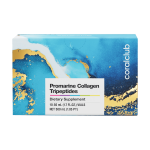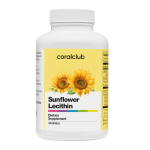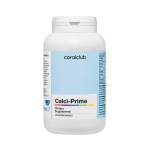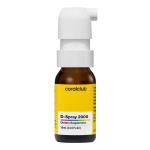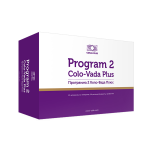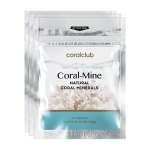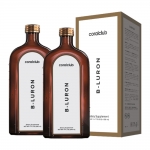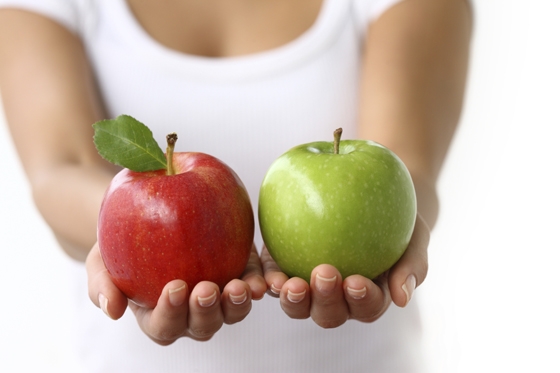 The program of restoration and preservation of health developed by the Academy of Health Coral Club International. Based on the book OA Butakova "Compendium of health programs."
The program of restoration and preservation of health developed by the Academy of Health Coral Club International. Based on the book OA Butakova "Compendium of health programs."
Nutritsiologikal and rehabilitation programs developed by doctors of various specialties and are based on the natural means of the highest quality.
Spirulina tablets (Spirulina Tablets) - 1 tablet 3 times a day. Contains essential amino acids.
Hlorodofilus (Chlor-o-dophilus) - 1 tablet 2 times a day between meals.
Alfalfa (Lucerne) - 1 tablet 3 times a day during meals.
Selenium (Selenium) - 1 tablet 2 times a day before meals. Strong antioxidant. Prolongs the life of red blood cells.
Iron (Iron) - 1 tablet per day during meals.
Coral Mine (Coral-Mine), Coral water, coral calcium - one bag to throw in a glass enclosed vessel with a capacity of 1.5 - 2 liters of drinking for 15-20 minutes before meals and 1 - 1.5 hours after eating. Drink during the day. You can drink capsules, tablets and powders. Aimed at maintaining optimal body water balance. Has improved biological properties (low surface tension, slightly alkaline pH levels, contains about 70 essential minerals, macro-and microelements in digestible form and optimal ratios, cleaned of chlorine and toxic substances), meets the needs of the body's cells. Water has an ordered structure of atoms becomes bioavailable digestible.
Anemia (from the Greek. An - otritsat. Particle and háima - blood), anemia, a group of diseases characterized by reduced hemoglobin content in erythrocytes (colorant blood that carries oxygen), the number of erythrocytes per unit volume of human blood of a given sex and age, as well as total weight of the blood in the body.
Anemia develops due to various reasons, accompanied by a variety of diseases and is often the only symptom of them. Quantitatively, it is expressed in the degree of reduction in hemoglobin concentration - iron-containing pigment of red blood cells, which imparts a blood red color.
Classification of anemia.
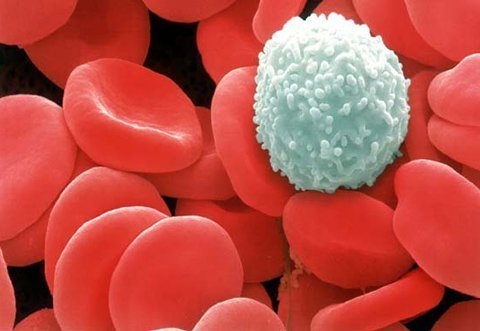 Depending on the degree of reduction in hemoglobin levels are three severity of anemia:
Depending on the degree of reduction in hemoglobin levels are three severity of anemia:
Easy - hemoglobin levels above 90 g / l;
Medium - hemoglobin within 90-70 g / l;
Heavy - hemoglobin level less than 70 g / l.
1. Anemia caused by acute blood loss.
2. Anemia caused by insufficient production of red blood cells.
- Aplastic. Aplastic anemia - a serious disease that represents a threat to the life of the patient. In aplastic anemia, bone marrow impaired ability to produce all three types of blood cells - red blood cells, white blood cells and platelets. Aplastic anemia causes are unknown, it is assumed that it is an autoimmune disease. Some factors that may cause this type of anemia include chemotherapy, radiation, environmental toxins, pregnancy.
- Iron . Iron deficiency anemia . This is the most frequent type of anemia. It is observed every five women and about half of all pregnant women. The reason for its development is the lack of iron . Bone marrow iron is needed for hemoglobin synthesis .
- One of the sources from which the bone marrow takes iron - is dead red blood cells. The normal red blood cell dies after about 120 days after synthesis ( birthday) . Parts of the deceased erythrocyte used to generate new red blood cells and hemoglobin. Thus, in the case of hemorrhage, red blood cells are lost , and there is a shortage of iron. Women who have noted a large blood loss during menstruation, are at risk for the development of iron deficiency anemia.
- Megaloblastic. Megaloblastic (pernicious) anemia - a rare disease caused by malabsorption of vitamin B12, as well as folic acid in the digestive tract or insufficient intake of these substances in the body. Internal stores of B12 is 2-3 mg, which is enough for about 3 years.
reasons:
- The primary cause of pernicious anemia is the lack of so-called " intrinsic factor " - a special protein produced by cells of the stomach and forming a B12 complex capable absorbed in the small intestine . Most often this factor deficiency develops as a result of a specific autoimmune process , or in the presence of other autoimmune diseases ( diabetes, thyroiditis , etc.).
- Another important reason - surgical intervention gastrointestinal tract , especially gastric resection , and the small intestine.
- Major cause of B12 deficiency and folic acid is a parasitic infestation ( broad tapeworm ) .
- Sometimes B12 deficiency is associated with an unbalanced diet - for example, strict vegetarians ( vegans ) .
- Heavy goiter .
- Sideroblastic anemia - hypochromic microcytic hypo- regenerative anemia due to violation of utilization of intracellular iron for the synthesis of Hb , despite normal or high content of iron in the mitochondria of erythroblasts . As a result, an increasing number of bone marrow sideroblasts - normoblast with characteristic annular arrangement of iron granules around the nucleus ( ringed sideroblasts ) .
- Hereditary Sideroblastic anemia .
- Acquired sideroblastic anemia.
- Anemia of chronic disease . In some types of chronic diseases such as cancer , rheumatoid arthritis, Crohn's disease and a number of other inflammatory diseases , impaired production of red cells may lead to the development of anemia. Renal failure is , for example , may cause hormone deficiency - erythropoietin , which stimulates the production of red blood cells by the bone marrow .
3. Anemia caused by destruction of red blood cells.
Hemolytic. Hemolytic anemia. To this group belong anemia, destruction of erythrocytes which is faster than they are synthesized by the bone marrow. There are many types of hemolytic anemia. As a rule, most of them also observed yellowing of the skin - jaundice.
Risk factors for anemia include:
- Lack of certain products in the diet and vitamins, such as vegetarians.
- Diseases of the stomach and intestines.
- Menstruation. In women, the risk of anemia is higher than that of men because of menstrual blood loss.
- Pregnancy. During pregnancy the risk of iron deficiency anemia higher because iron is used for the synthesis of hemoglobin and hemoglobin mother of the child.
- Anemia in the immediate family.
Common symptoms of anemia:
- Pallor.
- Weakness, fatigue, decreased performance, irritability, drowsiness.
- Dizziness, headaches, tinnitus, flashing "flies" before his eyes.
- Palpitations with little exertion or at rest.
- Pain in the heart.
- Dyspnea on slight exertion or at rest, feeling short of breath.
Often the first complaint in elderly patients with coronary heart disease is more frequent angina attacks, even after a small exercise. The nature and severity of complaints in cases of anemia are diverse and depend on the type , severity of anemia , the speed of its development and the individual patient .
Easy , and sometimes the average severity of anemia may remain asymptomatic and only be detected by blood test . However, with increasing degree of reduction of hemoglobin anemia signs and symptoms appear .
Prevention of anemia .
Most forms of anemia can not be prevented . However, to prevent degradation of hemoglobin in some risk groups can through proper diet .
Sources of iron are beef liver , lung, meat, buckwheat, millet, potatoes, spinach , shrimp , cauliflower, peaches, plums , apples , rye bread . Good eating foods containing vitamin C, it contributes to a better absorption of iron . Sources of vitamin C are: apples , blackcurrants , strawberries , cabbage , rose hips , bell pepper , tomatoes .
The content of vitamin B12 in some foods ( mg per 100 g of product):
- beef liver - 50-130 mg ;
- beef kidneys - 20-50 mcg ;
- cod liver oil - 40 g ;
- beef heart - 10 g ;
- herring ( fillet ) - 13 mcg ;
- cod 10 mg ;
- flounder - 10 mcg ;
- beef meat - 2-8 mg ;
- pork meat - 0.1-5 ug;
- veal meat - 2 mg ;
- Cheese - 1,4-3,6 mg ;
- cottage cheese, fat 1,0 g ;
- cream 20 % - 0.5 micrograms ;
- yogurt - 0.4 mg ;
- Folic acid content in certain foods ( MGK 100 g )
- brewer's yeast - 1470 mcg ;
- beef liver - 240 g ;
- beans , 160 g ;
- parsley - 117 g ;
- spinach - 80 g ;
- Kidney - 45 mcg ;
- salad - 40 g ;
- Wheat - 37 mcg ;
- rye - 35 mcg ;
- bread and 18-32 mg ;
- cabbage - 10-31 mcg ;
- Corn - 24 mcg ;
- green onions - 11 g ;
- meat (beef ) - 10 g ;
- apricots - 8 ug;
- Potatoes - 9 micrograms ;
- eggs - 7.5 mcg ;
- oranges - 5 g ;
- Onions - 5 ug;
- grapes - 4 mg ;
- lemon - 3 micrograms.
Proper nutrition is especially important for children during growth and pregnant women.
For people with a high need for iron or vitamins may be administered multi-vitamin complexes containing iron and folic acid .
* Programs are not drugs and their therapeutic doses much lower .

